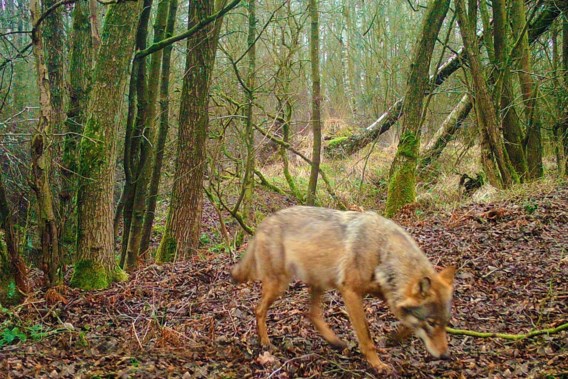For humans, it is a 38-hour walk from Limburg to Borken, a town in the German state of North Rhine-Westphalia. But for a wolf it is peanuts, “he can easily cover 80 kilometers per night,” says Jan Loos of the non-profit organization Welcome Wolf. “They can reach about 15 kilometers per hour at a trot.” It is therefore not surprising that a Limburg cub belonging to Noëlla and August has traveled 167 kilometers to our eastern neighbors.
The she-wolf is almost a cub: on May 1 she will turn one year old and she will be a “yearling,” Loos explains. It goes by the name GW3650f (probably not). It is still too early for a real name, says Loos, they will only get one when they do tricks or have settled down. “At this point she might as well get killed tomorrow.” Because it is not yet clear whether the cub will stay in Germany or continue its wanderings.
Swimming across the Rhine
GW3650f was born in May 2023, as one of the last cubs of the Limburg wolf couple Noëlla and August. DNA samples on a dead sheep in Borken revealed its presence in the German state of North Rhine-Westphalia on March 5.
“Wolves first look for a territory and then a partner. They travel thousands of kilometers if necessary. If the search for this cub goes well, we may be able to expect grandchildren of August and Noëlla in Germany,” says Loos. “Or she is wandering further. Then she could currently be perfectly located in, say, France or Poland, or deep in East Germany.”
Yet it is not self-evident that the Limburg she-wolf reached North Rhine-Westphalia. She may have had to swim across the Rhine, and that is not the biggest obstacle. “Trying not to get hit – that’s the biggest obstacle. Highways and railways are the wolf’s biggest enemies, especially during long wanderings, when it is difficult to avoid them.”
That’s why we have to wait and see whether GW3650f will make it. “The mortality rates are enormous,” says Loos. “August and Noëlla had 28 cubs in four years. So far, only one of them has reproduced. A large number of them died in traffic.”
Mysterious wolf
Last summer, GW3650f’s father, wolf August, was killed by a car on the N76 in Meeuwen at the age of seven. “He was the most mysterious wolf in Belgium,” Loos said at the time in De Standaard, because they could not find where he came from. He was the sans papiers of the wolves, and may have come from far away, “eastern Poland or further”. Noëlla comes from Germany. Together they managed a large territory, roughly all of Belgian Limburg was under their control.
“Sometimes the discourse about the wolf seems as if we are swamped with the animals. As if there are too many to comprehend. But their existence still hangs by a thread every day, especially in Flanders,” Loos concludes. “I cannot emphasize enough that we continue to report sightings. In Limburg, the residents are used to the presence of the wolf, so they sometimes forget that every sighting is valuable.”

